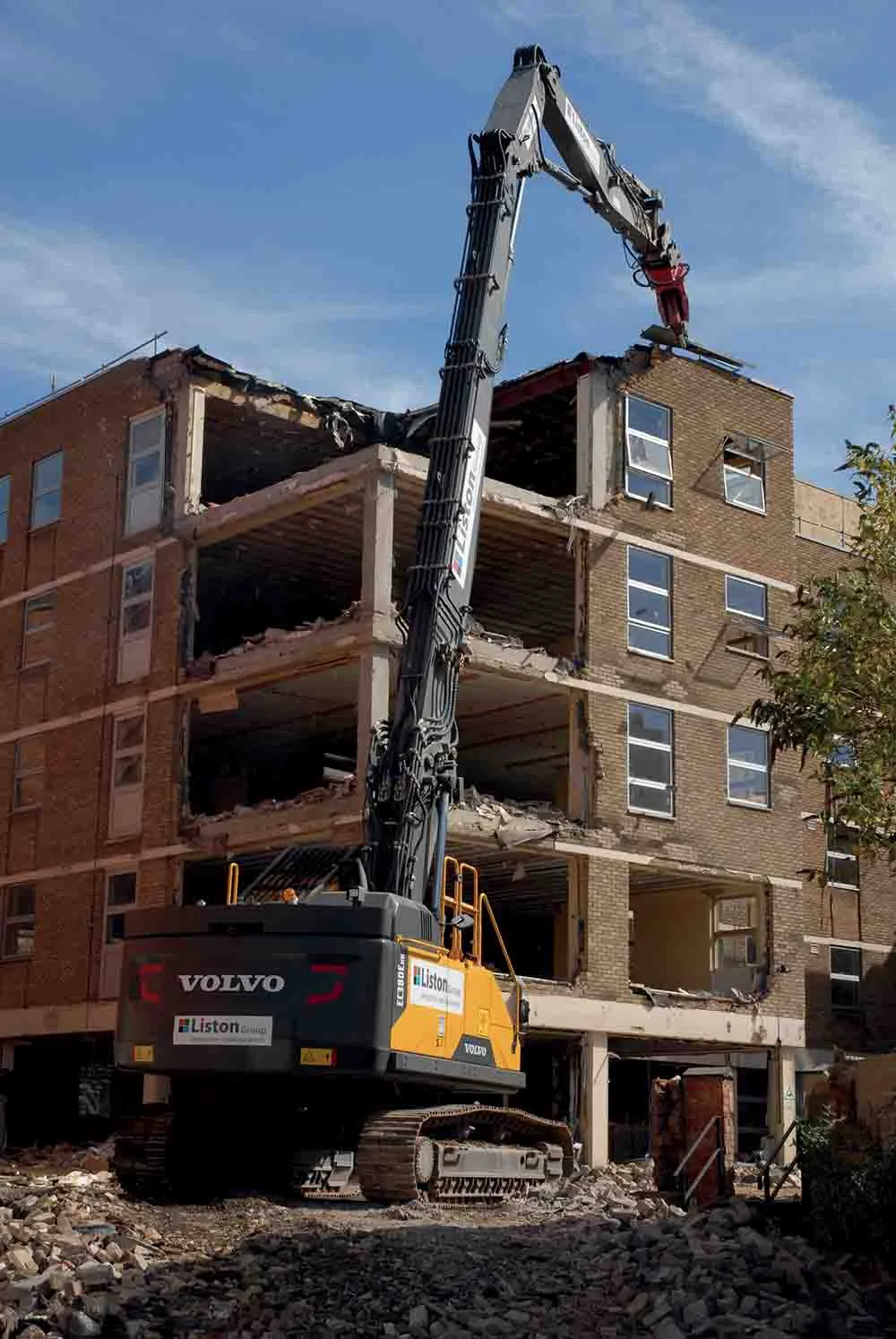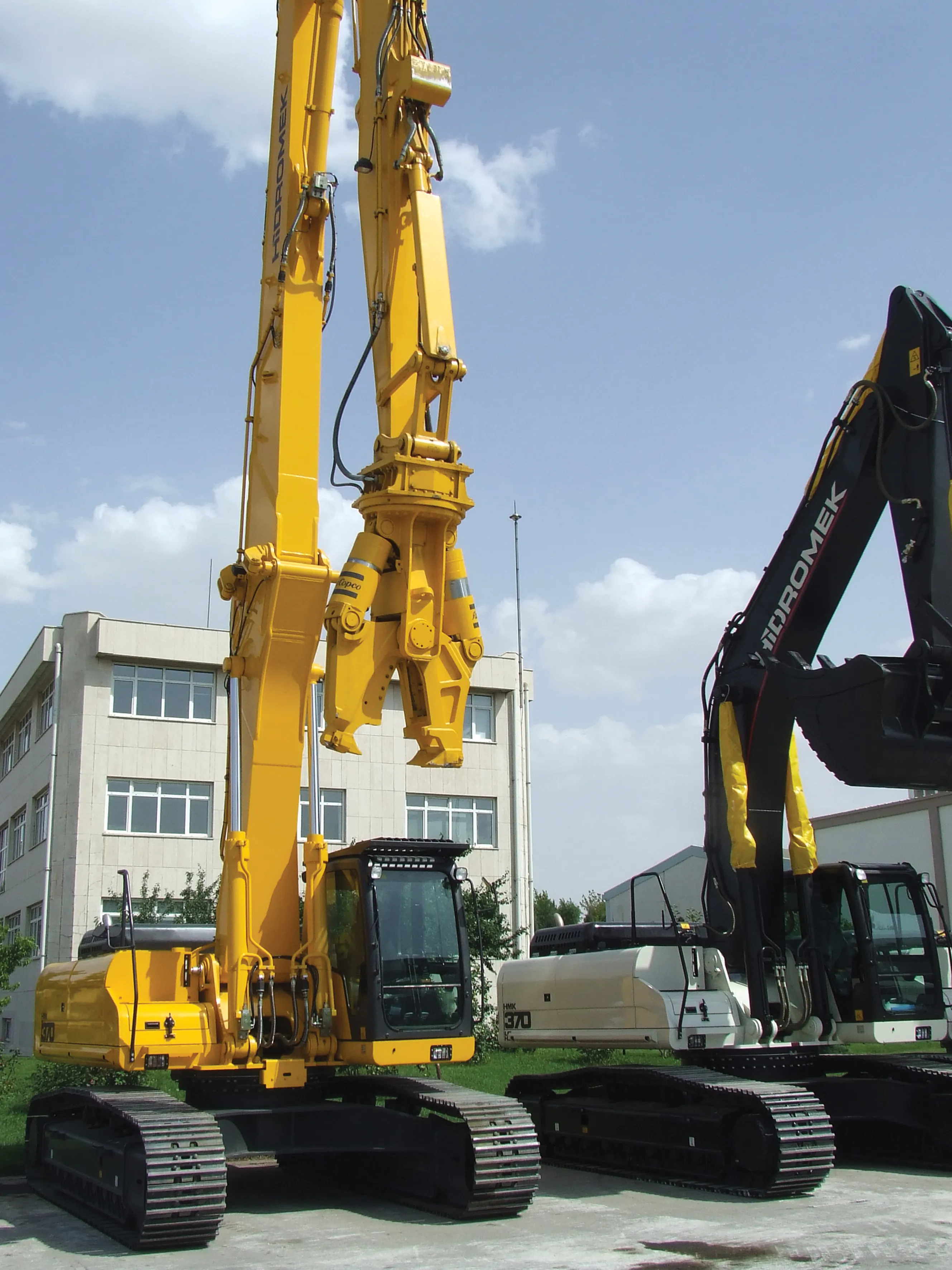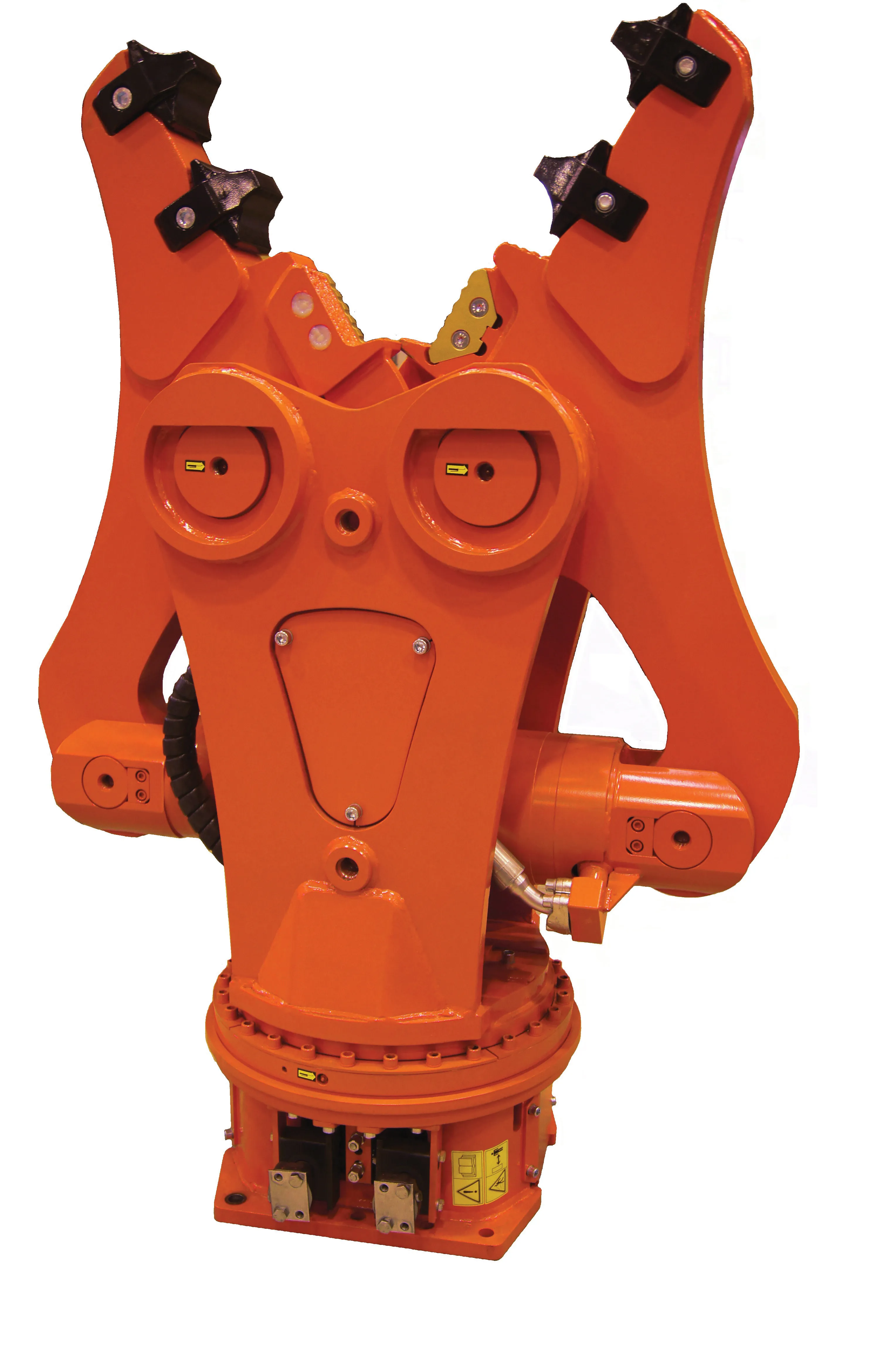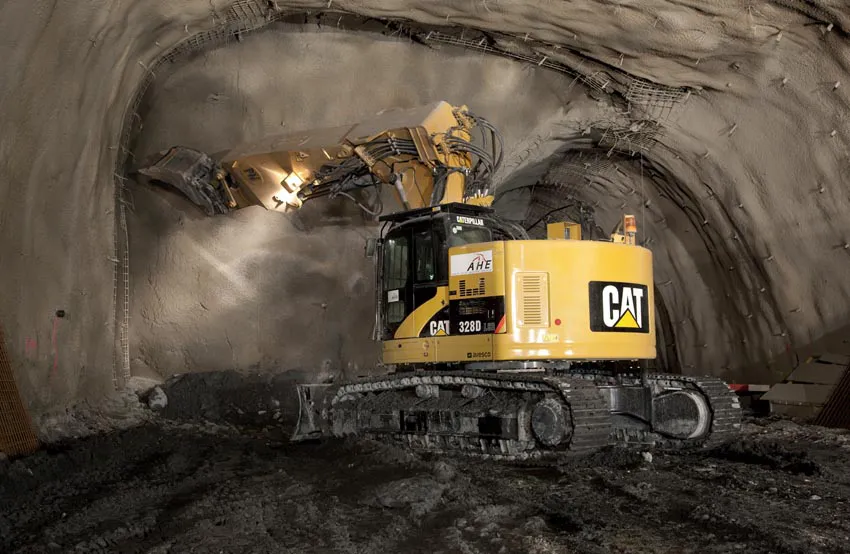UK demolition contractor Liston Group’s latest fleet addition is a 51tonne Volvo EC380E high reach machine.
The EC380E takes over from an EC360D high reach and is working alongside Volvo 25tonne excavators rigged for secondary demolition duties.
Reliability and performance of the EC360D high reach machine played a role in the choice of the newer machine, which has the extra reach, designated by the ‘E’, said Liston’s managing director Tony McLean.
In charge of the new EC380E is operator John Healy
April 10, 2017
Read time: 2 mins

UK demolition contractor Liston Group’s latest fleet addition is a 51tonne Volvo EC380E high reach machine.
The EC380E takes over from an EC360D high reach and is working alongside2394 Volvo 25tonne excavators rigged for secondary demolition duties.
Reliability and performance of the EC360D high reach machine played a role in the choice of the newer machine, which has the extra reach, designated by the ‘E’, said Liston’s managing director Tony McLean.
In charge of the new EC380E is operator John Healy - known as 'Mr. Tickle' - a nickname earned from 15 years' experience of his ability to 'tickle down' structures.
“It certainly has the best cab on the market in terms of comfort, and all the controls and layout of the functions have been well thought out,” he said. “Another useful feature is the swing open FOGS guard making it easy to clean the windscreen. The extra 2m reach over the EC360D is an added bonus and I’ve got excellent visibility at the working end thanks to two cameras installed on the demolition arm as well as rear and sideways cameras mounted on the machine’s superstructure.”
The EC380E’s Stage IV Final 13litre engine is matched to the electro-hydraulic system providing on-demand flow while reducing power losses within the circuit. Volvo’s ECO mode contributes up to 9% of the machine’s total improved efficiency over the D model - without any loss of performance in most operating conditions. As well as improving fuel efficiency, this increases controllability for more precise performance.
Maximum pin height of the 3-piece high-reach equipment is 23m and the maximum forward reach measures 14.5m. Opting for the standard fixed undercarriage means the maximum tool weight the machine can handle is 2.5tonnes. Other standard features include hose rupture valves fitted to all the equipment’s hydraulic cylinders. Side impact protection system rails surround the machine’s superstructure and there is a boom-cylinder heavy-duty protection guard. The high reach equipment can be quickly removed and replaced by standard digging equipment, thanks to the modular boom joint and quick release couplings.
The EC380E takes over from an EC360D high reach and is working alongside
Reliability and performance of the EC360D high reach machine played a role in the choice of the newer machine, which has the extra reach, designated by the ‘E’, said Liston’s managing director Tony McLean.
In charge of the new EC380E is operator John Healy - known as 'Mr. Tickle' - a nickname earned from 15 years' experience of his ability to 'tickle down' structures.
“It certainly has the best cab on the market in terms of comfort, and all the controls and layout of the functions have been well thought out,” he said. “Another useful feature is the swing open FOGS guard making it easy to clean the windscreen. The extra 2m reach over the EC360D is an added bonus and I’ve got excellent visibility at the working end thanks to two cameras installed on the demolition arm as well as rear and sideways cameras mounted on the machine’s superstructure.”
The EC380E’s Stage IV Final 13litre engine is matched to the electro-hydraulic system providing on-demand flow while reducing power losses within the circuit. Volvo’s ECO mode contributes up to 9% of the machine’s total improved efficiency over the D model - without any loss of performance in most operating conditions. As well as improving fuel efficiency, this increases controllability for more precise performance.
Maximum pin height of the 3-piece high-reach equipment is 23m and the maximum forward reach measures 14.5m. Opting for the standard fixed undercarriage means the maximum tool weight the machine can handle is 2.5tonnes. Other standard features include hose rupture valves fitted to all the equipment’s hydraulic cylinders. Side impact protection system rails surround the machine’s superstructure and there is a boom-cylinder heavy-duty protection guard. The high reach equipment can be quickly removed and replaced by standard digging equipment, thanks to the modular boom joint and quick release couplings.








